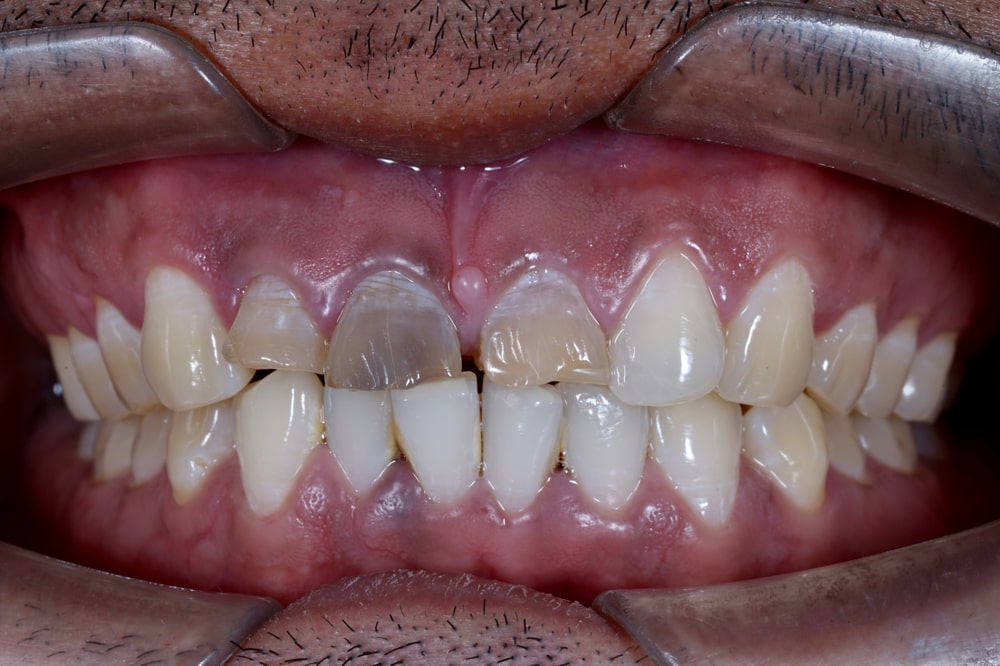While many people have heard of a root canal, not as many people are familiar with why root canals are necessary. Root canal therapy is a restorative dental treatment for severely decayed teeth, specifically those that have been affected by pulpitis. Pulpitis is an infection of the innermost layer of your teeth. This blog post discusses 3 signs that indicate a root canal is needed to remove a pulp infection and why root canals are necessary.

The inside of your tooth can become infected when decay-causing bacteria eat through your enamel and dentin layers to reach the pulp layer. Dental pulp is composed of blood vessels and the tooth nerve. Since it is normally protected by the dentin and enamel layers, the infection spreads quickly through the pulp. Root canal procedures are typically performed when the pulp in a tooth has died and started to decay.
Although pulpitis can only be accurately diagnosed by a dentist, there are some symptoms associated with pulpitis that can indicate a trip to your local dentist’s office is needed. Pulp infections often cause pain, discoloration of the tooth, and gum irritation. If you experience the following symptoms, then it is possible that you need a root canal:
Tooth Pain
A toothache is the most common and recognizable sign that you need a root canal. Pain associated with a pulp infection is usually described as a sudden, throbbing pain that is felt deep in the tooth or jaw. This pain may come and go, or remain constant, however it generally tends to get progressively worse over time. Oftentimes, the pressure of chewing and biting can make the pain worse, which makes it difficult to eat properly.
In addition to a pretty bad toothache, you may also experience pain in the form of tooth sensitivity. Tooth sensitivity is a sharp, deep pain that occurs when eating hot, cold, sweet, or acidic foods. Although many people often experience tooth sensitivity, prolonged tooth sensitivity that lasts even when the stimuli has been removed could indicate a pulp infection.
Discolored Tooth

Another recognizable sign of a pulp infection is one discolored tooth that does not match the surrounding teeth. When teeth stain as a result of consuming highly pigmented foods or beverages, they tend to all stain somewhat evenly. Even though staining can be more prevalent in some areas, all the teeth generally have a similar tint. With a pulp infection, however, you may notice that one tooth is distinctly colored differently. In most cases, a tooth that has been infected will appear yellow, gray, light brown, or black. This is a result of the dental pulp dying within the tooth.
Gum Problems
The same bacteria responsible for causing a pulp infection can also infect your gums as well. If the infection from the inside of your tooth starts to spread to the gum tissue, you may notice that the gums around the affected tooth become red, swollen, or tender. In some cases, pimples can form on the gums around the tooth and there may even be discharge coming from the gums. Anytime your gums are tender and/or red in color, they should always be checked by your dentist. However, if you notice gum problems in addition to the other two symptoms, you should call your dentist as soon as possible for an appointment.
Why a Root Canal?

Now that we’ve discussed pulp infections and their top three most common symptoms, let’s look into why root canals are required to remove this infection. Many people do not realize that once a pulp infection has started, it can only be treated by removing the infected tissue. Unlike other types of bacterial infections, pulp infections do not respond to oral antibiotics since the bacteria are concealed within the tooth. This means that the infection will continue to progress from the inside of the tooth, down through the roots, and even into the surrounding teeth, if it is not treated.
Therefore, root canals are necessary because they allow your dentist to go into your tooth and physically remove the infected tissue and bacteria. Then the entire inside of the tooth is thoroughly flushed with an antimicrobial solution to kill off any remaining bacteria. Root canals stop the infection, prevent it from spreading, and ultimately save your natural tooth structure.
The “Root” Takeaway
Pulp infections occur when bacteria enter the inside of the tooth. These infections can cause pain, discolored teeth, or gum problems. If you experience any of these symptoms, then you may need a root canal to prevent the infection from spreading. Root canals are necessary because they allow your dentist to go into your tooth and physically remove the infected tissue and bacteria.
At Sedation Dental Care in Raleigh, NC, we provide a range of dental sedation options so you can relax during your root canal.
